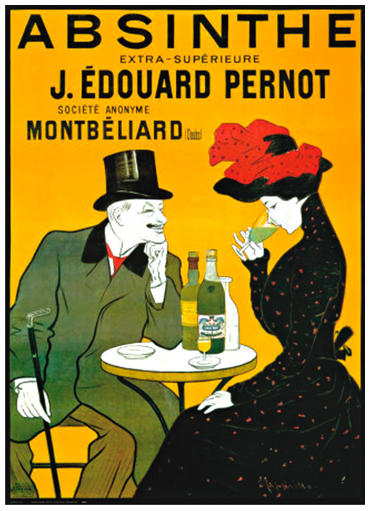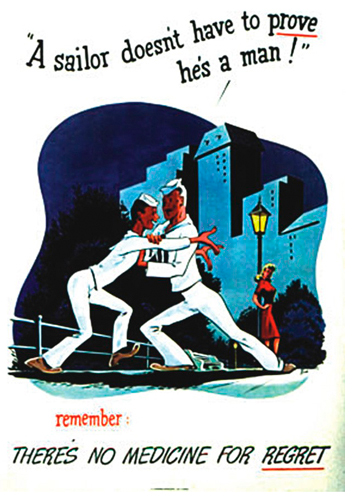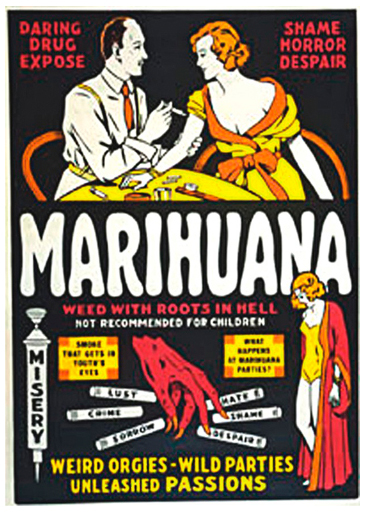- Publisher's Note
- Editorial
- In Conversation with Kanishka Raja
- Definitional Lack in an Inclusive World: Cutting Edge as Responsible Art
- Democratization Through Cutting Edge Art
- Mumbai for Cutting Edge
- Moments in Time (And a Little While After)
- In Transition
- Tip of Our Times
- Srishti School of Art, Design and Technology – A Cradle for Creative Excellence
- Cutting the Edges of Architecture
- Overview Cutting Edge
- The Matter Within: New Contemporary Art of India Featuring Photography, Sculpture and Video
- Generation in Transition: New Art from India
- Indian Master Painters at India Art Festival
- Life, Luxury & the Avant-Garde
- Mother India: The Goddess in Indian Painting
- The Last Harvest: Paintings of Rabindranath Tagore
- Asia Society Museum Presents Exhibition of Rabindranath Tagore's Paintings and Drawings
- Stieglitz and his Artists: Matisse to O'Keeffee
- Beauty of Unguarded Moments
- Across Times, Across Borders: A Report on the Chinese Art Exhibition
- A Summer in Paris
- Random Strokes
- The Emperor’s New Clothes and What It Really Means
- Understanding Versus Adulation
- What Happened and What’s Forthcoming
- Occupy Wall Street, The New Economic Depression And Populist Art
- Unconventional with Witty Undertones
- Narratives of Common Life and Allegorical Tales In Traditional and Modern Forms the Best of Kalighat 'Pats'
- Colours of the Desert
- Unbound
- I Am Here, An Exhibition of Video Self Portraits at Jaaga
- Staging Selves: Power, Performativity & Portraiture
- Venice Biennale Outreach Programme A Circle of Making I and II
- Cartography of Narratives, Contemplations on Time
- Joseph Kosuth: The Mind's Image of Itself #3' A Play of Architecture and the Mind
- Maharaja: Reminiscing the Glorious Past
- Art from Thirteen Asian Nations
- Tibetan Arms and Armor at Metrpolitan Museum of Art
- The Art of Poster Advertisement
- Unusual Angles and Facets of Museum Buildings
- Elegant Fantasies
- Art Collection and Initiatives
- Art Events Kolkata
- Mumbai Art Sighting
- Art Bengaluru
- Musings from Chennai
- Preview
- In the News
ART news & views
The Art of Poster Advertisement
Volume: 4 Issue No: 22 Month: 11 Year: 2011
Collectible
by Anurima Sen
.jpg) Advertising through posters has always been an effective method to entice readers into buying something or the other. It is a traditional way of advertising, yet it poses a number of unique problems. Unlike advertising through the television or the radio, a poster needs to grab the attention of the onlooker while simultaneously delivering the message. According to French historian Max Gallo, 'for over two hundred years, posters have been displayed in public places all over the world. Visually striking, they have been designed to attract the attention of passers-by, making us aware of a political viewpoint, enticing us to attend specific events, or encouraging us to purchase a particular product or service.'
Advertising through posters has always been an effective method to entice readers into buying something or the other. It is a traditional way of advertising, yet it poses a number of unique problems. Unlike advertising through the television or the radio, a poster needs to grab the attention of the onlooker while simultaneously delivering the message. According to French historian Max Gallo, 'for over two hundred years, posters have been displayed in public places all over the world. Visually striking, they have been designed to attract the attention of passers-by, making us aware of a political viewpoint, enticing us to attend specific events, or encouraging us to purchase a particular product or service.'
Collectors however are mostly interested in what we call the 'modern poster'. The modern poster dates back to the 1870s when the printing industry developed by leaps and bounds, perfecting colour lithography and ensuring mass production. Today, such posters are no longer regarded as just another medium of advertisement, but as an imperative art form.
 When one reflects upon vintage posters, one automatically thinks of hand painted film posters that were once hung at the entrance of a movie theatre. Few are aware of the vast numbers of medical advertising posters that were available in the late 1800s onwards.
When one reflects upon vintage posters, one automatically thinks of hand painted film posters that were once hung at the entrance of a movie theatre. Few are aware of the vast numbers of medical advertising posters that were available in the late 1800s onwards.
Quack doctors and dubious medical information flooded the market back then, armed with flashy, impressive posters that boasted of miraculous healing powers. The average consumer would swear by the healing properties of snake oil and Phrenology, hardly bothering to find out about the contents of the 'medicine' which they were merrily gulping down.
These medical posters brashly claimed cures for all kinds of sickness and ailments and captured the popular imagination with its use of fancy fonts, bright colours and forceful slogans. However, the aim was not always to sell dubious products. These posters were also used to promote newly opened pharmacies, to warn against epidemics or social afflictions such as venereal diseases, alcoholism and so on.
 In a recent exhibition at the Philadelphia Museum of Art, titled Health for Sale: Posters from the William H. Helfand Collection, a wide variety of advertisements were displayed with subjects as widely ranging as good hygiene to the treatment of dyspepsia.
In a recent exhibition at the Philadelphia Museum of Art, titled Health for Sale: Posters from the William H. Helfand Collection, a wide variety of advertisements were displayed with subjects as widely ranging as good hygiene to the treatment of dyspepsia.
One of the artists whose work has been represented in the above mentioned collection is Jules Cheret, a French painter and lithographer, famously called 'the father of the modern poster'. He was born in Paris, to a poor artisan family, and the lack of finances led to an incomplete education. When he was only thirteen years of age, he began a three-year apprenticeship with a lithographer and followed it up with an art course at the Ecole Nationale de Dessin.
His works were in great demand, and sold everything from tickets for troupes and operas to cosmetics and pharmaceutical products. His representation of liberal, free spirited women in the arena of poster advertising was radical. These lively, light-footed, hedonistic women of Cheret's posters were called 'Cherettes' and were widely seen on the streets of Paristhese were women who had broken the shackles of conservatism and social taboo. Thus, Cheret was quite aptly called the 'father of women's liberation' as well. One needs to see his representation of night life in cabarets, such as Moulin Rouge, to realise the difference in his portrayal of women. His revolution was that of colour, combining fun and fantasy, laughter and dancing, to dazzle the senses of an onlooker. It was Cheret who had single handedly elevated poster advertisement to the rank of sophisticated fine art.
 Leonetto Cappiello's work has also been exhibited in the William H. Helfand collection. His style is what can be considered the exact opposite of Cheret's. Cheret's poster art had a painterly quality; they looked as if they were meant to be painted on a canvas, with its aura of diffused light and use of oil paint. This is in fact what characterized the early advertising poster. On the other hand, Cappiello ensured that his figures were dramatic and bold in comparison to the black, basic backgroundsa marked departure from the poster art tradition. This style is also called the 'science of the “blot”'placing light-coloured figures and text on a dark background to garner maximum visibility.
Leonetto Cappiello's work has also been exhibited in the William H. Helfand collection. His style is what can be considered the exact opposite of Cheret's. Cheret's poster art had a painterly quality; they looked as if they were meant to be painted on a canvas, with its aura of diffused light and use of oil paint. This is in fact what characterized the early advertising poster. On the other hand, Cappiello ensured that his figures were dramatic and bold in comparison to the black, basic backgroundsa marked departure from the poster art tradition. This style is also called the 'science of the “blot”'placing light-coloured figures and text on a dark background to garner maximum visibility.
According to the press release by the Philadelphia Museum of Art, 'Cappiello's silhouetted figures demonstrate the beneficial effect of the product being advertised, as in the case of a smiling senior citizen dancing for joy as a result of taking Uricure pills in a 1910 poster promoting this remedy for rheumatism, arthritis, gout and kidney stones. Whether Uricure was effective is questionable, but Cappiello's bold approach revolutionized 20th century poster design with striking graphics and bright colours.'
 Cappiello's portraits were playful, and his lines were clean and simple. It was this style that enabled him to take the leap from Art Nouveau to the modernist Art Deco, while still combining styles from other epochs. His simplicity of execution led to a prolific career; Cappiello had produced around a thousand posters in his time.
Cappiello's portraits were playful, and his lines were clean and simple. It was this style that enabled him to take the leap from Art Nouveau to the modernist Art Deco, while still combining styles from other epochs. His simplicity of execution led to a prolific career; Cappiello had produced around a thousand posters in his time.
According to Steven Heller, in his book Design Humour: the Art of Graphic Wit, Leonetto Cappiello was a 'prolific posterist in France and Italy during the early twentieth century and achieved memorable imagery through his comic, gestural drawings. His lettering was bold and straightforward, with his humour usually conveyed through a single figure surrealistically juxtaposed with the object being advertised. An example of this is the human firefly surrounded by light bulbs in his brilliant poster for Lampe Osmine.'
As I have mentioned earlier, these medical advertisements were not limited to marketing certain products. They also endorsed government service campaigns and warned against social and moral afflictions. These include alcoholism, use of marijuana as well as STDs. Linking risqué tendencies to moral failings, these medical posters launched a streamlined attack on drug abuse and sexual transgressions which led to the transmittal of venereal diseases. The message conveyed by these posters was frightening; men were urged to steer clear of women as much as possible, but the representation was colourful and bold.
This era of poster advertisements could be best summed up in the French writer Guillaume Apollinaire's words, 'Catalogues, posters, advertisements of all sorts… Believe me, they contain the poetry of our epoch.'
The kind of claim poster advertisement made on public memory and imagination remains unparalleled to this day. Traditional visual arts could not match up to the accessibility that this kind of art possessed. It captured the vitality of popular culture and ensured that people would continue collecting and celebrating posters even in the twenty-first century.